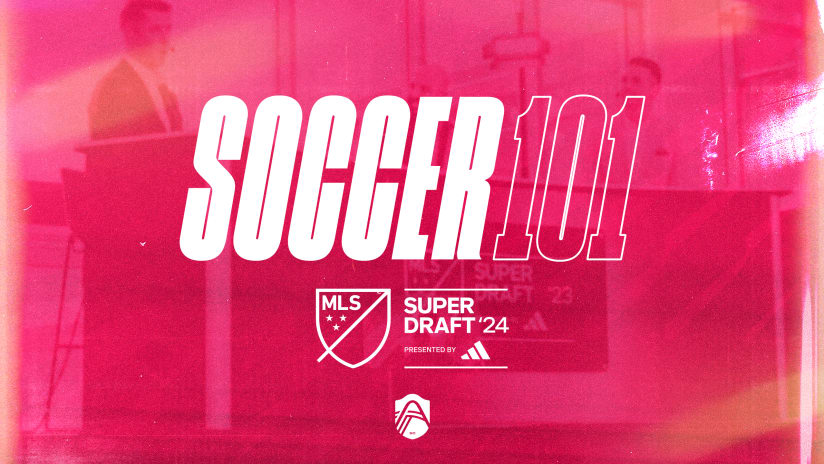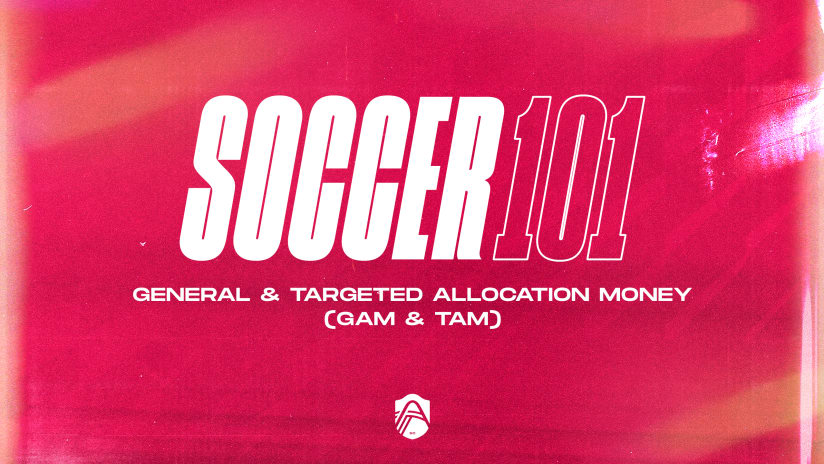Written by Zach Lowy | Co-founder & Lead Writer at BreakingTheLines.com
Major League Soccer was founded in 1996 to fill a void in men’s professional soccer in the United States. After the North American Soccer League’s collapse 11 years later, it quickly became the nation’s premier soccer division, attracting big-name footballers such as Carlos Valderrama and Jorge Campos; but the league’s first worldwide star came in 2007 with David Beckham. Having emerged as one of the game’s most noticeable faces at Sir Alex Ferguson’s Manchester United before leaving in 2003, Beckham won his first La Liga title in his four-year spell at Real Madrid on June 17, 2007, before immediately heading to Los Angeles and becoming the first Designated Player in the history of MLS.
The Designated Player Rule, often referred to as the Beckham Rule, allows MLS teams to sign up to three players that would be considered outside its salary cap, either by offering the player higher wages or by paying a high transfer fee for the player. The 32-year-old Beckham left Los Blancos after conquering La Liga and signed a five-year contract with the Los Angeles Galaxy with an annual salary of $6.5 million. In addition, Beckham was given the option to buy an MLS expansion franchise in any market except New York City, which he would later use in February 2014 just months after ending his professional career at Paris Saint-Germain, and buy an MLS expansion team for $25 million – Inter Miami. After coming off the bench in a 1-0 loss vs DC United – his MLS debut – Beckham provided two assists in a 5-4 defeat to New York Red Bulls, and in total, he’d go on to score 18 goals and 32 assists in 98 games for the Galaxy, and his arrival drew plenty of eyeballs to the young league and a tidal wave of worldwide stars such as Wayne Rooney, Frank Lampard and Steven Gerrard moving to the States.
What is the Designated Player Rule?
Up until 2007, MLS teams were forced to work within a salary cap, preventing them from spending large amounts of money on new players and encouraging them to work with younger homegrown players as they built their squads in the nascent league. However, David Beckham’s arrival saw MLS change its rules to allow teams to sign up to three players outside its salary cap, enabling teams to splurge in wages and transfer fees in order to attract some of the biggest names in world soccer. There have been 311 Designated Players in the 25-year history of MLS, with clubs throughout the nation attracting some of the biggest stars in the game.
Who are some past and current MLS Designated Players?
We’ve seen not just big-name veteran names but also young talents from foreign leagues be used with the Designated Player Rule. Ex Barcelona and Argentina and manager and current Mexico coach Gerardo Martino guided Atlanta United to the playoffs in the club’s debut season in 2017 thanks in large part to three South American DPs – Héctor Villalba (23), a Paraguayan winger who scored 13 goals, Josef Martínez (24), a Venezuelan striker who scored 19, and Miguel Almirón (23) a Paraguayan attacking midfielder who scored 9. The following year, Atlanta broke the MLS transfer record by spending $15 million on 18-year-old Argentine winger Esequiel Barco.
Atlanta would skyrocket to second in the table and narrowly miss out on the Supporters’ Shield to New York Red Bulls who finished two points above them, but it was Martino’s side who had the last laugh, beating both sides from the Big Apple before beating Portland Timbers at the Mercedes-Benz Stadium thanks to goals from Martínez and Argentine right back Franco Escobar. The following year, they’d win the U.S. Open Cup and the Campeones Cup, finishing second again and losing in the Conference Finals. Atlanta, who had signed Almirón from Argentine side Lanús for $8 million two years prior, sold him to Newcastle for $26.40 million, making him the most expensive signing in club history and the biggest sale in MLS history.
What are Young Designated Players?
There is an important distinction to make with regards to Almirón: when he joined the expansion side in December 2016, he was considered a Young Designated Player. Per MLS’ official rules: “A Designated Player who is 23 years old (or younger than the age of 23) during the League Year (the age of the player is determined by year - not date - of birth) will carry the following Young Designated Player Salary Budget Charge: Ages 20 and younger: $150,000, Ages 21-23: $200,000. If such a Young Designated Player joins the club after the opening of the Secondary Transfer Window, he will carry the Mid-Season Young Designated Player Salary Budget Charge of $150,000. Clubs may "buy down" the Salary Budget Charge of a Designated Player with General Allocation Money. The reduced budget charge may not be less than $150,000.”
The league goes on to state that each club will be allotted two Designated Player roster slots. Clubs with two Designated Players may add a third Designated Player by paying $150,000 to the League, which shall be split among clubs with two or fewer occupied Designated Player slots for use as General Allocation Money in the following MLS Season. Clubs must pay the $150,000 fee every year in which a third Designated Player slot is occupied on the club's roster. If a club uses the third Designated Player slot to sign a Young Designated Player, then the club will not be obligated to pay the $150,000 charge. Designated Player slots are also not tradable.
Have Designated Players been more congested in major cities or have they been more spread out across the league?
A few hours south of Atlanta, Inter Miami have brought in Blaise Matuidi and Gonzalo Higuaín, both of whom have started in World Cup Finals, whilst Orlando City have signed Ballon d’Or winner and World Cup winner Kaká. Take a drive up the Atlantic coast, we have expansion side Charlotte bringing in a pair of Polish youngsters as DPs with Kamil Jóźwiak and Karol Świderski, whilst D.C. United enjoyed a brief but successful spell with Premier League legend Wayne Rooney. Thierry Henry ended a three-year spell with Pep Guardiola’s Barcelona and joined New York Red Bulls in 2010, eventually becoming the team’s all-time assist leader with 37 before hanging up his boots in 2014. Their crosstown rivals New York City FC have seen their fair share of marquee DPs with David Villa, Andrea Pirlo, and Frank Lampard donning the sky blue shirts.
In the midwest, Minnesota United have focused on young South American forwards such as Luis Amarilla and Emanuel Reynoso in a similar vein to Atlanta and Real Salt Lake, whilst Chicago Fire drew headlines when they signed World Cup winner Bastian Schweinsteiger in 2017. Down south, Austin FC and FC Dallas have also focused their DP selections on South American forwards such as Sebastián Driussi and Alan Velasco, with Houston Dynamo completing arguably the biggest DP signing in club history after signing Mexican midfielder Héctor Herrera after the expiry of his contract at Atlético Madrid.
How much does a Designated Player cost?
A Designated Player’s transfer fee can range from $16 million, like when Atlanta United signed Argentine youngster Thiago Almada this year, or free, like when Andrea Pirlo joined New York City FC after his contract at Juventus expired. A DP is a player who can be paid whatever the club can afford but is only charged a specific amount against the salary cap, as determined by the wage structure of the league and the age of the player.
Per MLS regulations, up to 20 players, occupying roster slots 1-20, count against the club's 2022 Salary Budget of $4,900,000 and are referred to collectively as the club's Senior Roster. Clubs are not required to fill roster slots 19 and 20, and clubs may spread their entire Salary Budget across 18 Senior Roster Players. A minimum Salary Budget Charge will be imputed against a club's Salary Budget for each unfilled Senior Roster slot below 18. A club may have no more than 20 players on its Senior Roster, subject to the Season-Ending Injury, Injured List, and Loan exceptions. The Maximum Salary Budget Charge for a single player is $612,500.
Alright, so the Beckham rule has helped bring in plenty of big-name veterans – what about teams who want to buy low and sell high?
Whilst Atlanta United are the obvious example hereafter selling Almirón to Newcastle, there are plenty of other teams who have cashed in on their DPs for hefty profits. Uruguayan winger Diego Rossi joined Los Angeles FC in 2018 and left three years later to Fenerbahçe with LA doubling their money at $6 million. After signing 20-year-old Colombian midfielder Carlos Gruezo from Stuttgart for $1.65 million, FC Dallas would sell Gruezo to fellow Bundesliga side Augsburg in 2019 for $4.4 million.
Does St. Louis CITY SC have a Designated Player?
St. Louis completed the first DP signing in club history on March 3 when the club signed 25-year-old striker João Klauss on a three-and-a-half-year contract. Born in Criciúma, Santa Catarina, Brazil to a German father and an Italian mother, Klauss began his development at Internacional in Porto Alegre and would go on to play for Juventude and Grêmio before joining Bundesliga side Hoffenheim in 2017. Klauss was loaned out to Finnish side HJK Helsinki and finished as the league’s top scorer with 21 goals as HJK won their 29th Veikkausliiga league title, then moved to Austrian side LASK Linz and scoring 20 goals and 4 assists before loan spells with Belgian sides Standard Liège and Sint-Truiden. He’ll be looking to recreate his impressive form in Finland and Austria as St. Louis kick off their inaugural MLS campaign in a league that has been made increasingly competitive thanks to the introduction of Designated Players.





